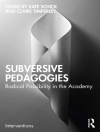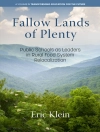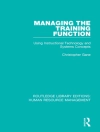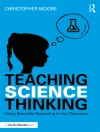’Dove and Honigsfeld′s new book arrives at the perfect time as an increasing number of schools move to a collaborative instructional model and are searching for guidance. The authors not only tell us how to effectively collaborate and co-teach to benefit English learners, they actually show us what each component of the collaborative instructional cycle looks and feels like, complemented by innovative video and web content.’
—DIANE STAEHR FENNER, Coauthor of Unlocking ELs’ Potential and President of Support Ed
Because teacher collaboration isn’t an option, it’s a MUST!
The proof is borne out by any assessment: our non-native speakers learn faster and achieve more when general ed teachers and EL specialists co-plan and co-deliver instruction in the very same classroom. That’s why you’ll want to put Co-Teaching for English Learners at the top of your reading list. Step by step, EL authorities Maria Dove and Andrea Honigsfeld walk you through the entire collaborative instruction cycle, along with seven potential classroom configurations from which to choose.
Whether you’re new to co-teaching or just see room for improvement in your practice, this practical handbook delivers every technique and tool you need to make the most of your collaboration, including video footage of co-teaching in action. Inside you’ll find:
• In-depth profiles of the seven models, with detailed descriptions and analyses
• A review of advantages and challenges of each model’s implementation
• Clear explanations of each teacher’s role along with self-assessment tools
• Tried-and-true strategies for the entire instructional cycle: co-planning, co-instruction, co-assessment, and reflection
• Real-life accounts from co-teaching veterans
Long gone are the days when our ELs are taught in isolation—and rightfully so. Read Co-Teaching for English Learners, implement its strategies, and soon enough you, too, can set up a learning environment in which all students thrive.
Spis treści
Preface
Acknowledgments
About the Authors
1. Teacher Collaboration Is Not an Option: It Is a Must
2. Co-Planning
3. Model 1—One Group: One Leads, One “Teaches on Purpose”
4. Model 2—One Group: Two Teach the Same Content
5. Model 3—One Group: One Teaches, One Assesses
6. Model 4—Two Groups: Two Teach Same Content
7. Model 5—Two Groups: One Preteaches, One Teaches Alternative Information
8. Model 6—Two Groups: One Reteaches, One Teaches Alternative Information
9. Model 7—Multiple Groups: Two Monitor/Teach
10. Collaborative Assessment
11. Reflection: Closing the Collaborative Instructional Cycle . . . and Starting a New One
References
Index
O autorze
Andrea Honigsfeld, Ed D, is professor in the School of Education at Molloy College, Rockville Centre, New York. Before entering the field of teacher education, she was an English-as-a-foreign-language teacher in Hungary (Grades 5–8 and adult) and an English-as-a-second-language teacher in New York City (Grades K–3 and adult). She also taught Hungarian at New York University. She was the recipient of a doctoral fellowship at St. John’s University, New York, where she conducted research on individualized instruction. She has published extensively on working with multilingual learners and teacher collaboration. She received a Fulbright Award to lecture in Iceland in the fall of 2002. In the past 22 years, she has been presenting at conferences across the United States, China, Denmark, Japan, the Philippines, Sweden, Thailand, the United Kingdom, and the United Arab Emirates.She coauthored Differentiated Instruction for At-Risk Students (2009) and coedited the five-volume Breaking the Mold of Education series (2010–2013), published by Rowman and Littlefield. She is also the coauthor of Core Instructional Routines: Go-To Structures for Effective Literacy Teaching, K–5 and 6–12 (2014), Growing Language and Literacy (K-8 and 6-12, 2019, 2024 respectively) published by Heinemann. With Maria G. Dove, she coedited Coteaching and Other Collaborative Practices in the EFL/ESL Classroom: Rationale, Research, Reflections, and Recommendations (2012), Co-Teaching for English Learners: Evidence-Based Practices and Research-Informed Outcomes (2020), Portraits of Collaboration: Educators Working Together to Support Multilingual Learners (2022), and coauthored Collaboration and Co-Teaching: Strategies for English Learners (2010), Common Core for the Not-So-Common Learner, Grades K–5: English Language Arts Strategies (2013), Common Core for the Not-So-Common Learner, Grades 6–12: English Language Arts Strategies (2013), Beyond Core Expectations: A Schoolwide Framework for Serving the Not-So-Common Learner (2014), Collaboration and Co-Teaching: A Leader’s Guide (2015), Co-Teaching for English Learners: A Guide to Collaborative Planning, Instruction, Assessment, and Reflection (2018), Collaborating for English Learners: A Foundational Guide to Integrated Practices (2019), and Co-Planning: 5 Essential Practices to Integrate Curriculum and Instruction for English Learners (2022). She is a contributing author of Breaking Down the Wall: Essential Shifts for English Learner Success (2020), From Equity Insights to Action (2021), Digital-Age Teaching for English Learners (2022), Collaboration and Co-Teaching for Dual Language Learners: Transforming Programs for Multilingualism and Equity (2023), Breaking Down the Monolingual Wall: Essential Shifts for Multilingual Learners’ Success (2024). Collaboration for Multilingual Learners With Exceptionalities: We Share the Students (2024), Collaborative Assess












